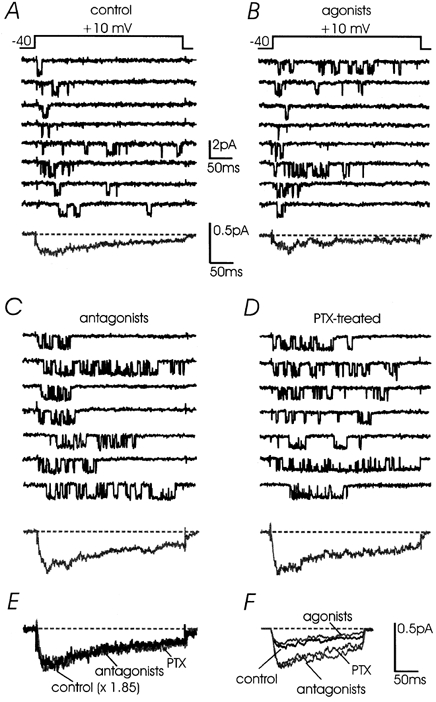Figure 2. L-channel autocrine inhibition is mimicked by ATP and opioids and is removed by receptor antagonists or PTX treatment.

Representative traces of Bay K-modified L-channel activity recorded at +10 mV in different experimental conditions; Vh -40 mV. A, low-Po channel activity recorded in control conditions with pulses of 320 ms. The pipette solution was the same as in Fig. 1. The averaged current at the bottom was calculated over 150 sweeps of 320 ms including null sweeps pooled from 16 patches. B, ATP (100 μm), DAMGO (10 μm) and DPDPE (1 μm) added to the control solution mimicked the low-Po activity of control patches. The averaged current had slightly lower amplitude but similar kinetics to the control (n = 188 sweeps, 12 patches). C and D, sustained L-channel activity recorded at +10 mV with the antagonists in the pipette (10 μm naloxone and 100 μm suramin) (n = 166 sweeps, 12 patches) or after incubation with 100 ng ml−1 PTX for 12 h (n = 125 sweeps, 13 patches). Notice the increased amplitude of averaged currents but similar activation/inactivation kinetics. E, overlapped averaged currents taken from above. The control current was scaled by a factor of 1.85 and compared with that with the antagonists and PTX. F, overlapped averaged currents obtained from a second series of experiments using pulses of 200 ms to +10 mV; Vh -40 mV. The currents were derived from a large number of sweeps per patch: control, 415 sweeps, 8 patches; agonists, 495 sweeps, 10 patches; antagonists, 400 sweeps, 8 patches; and PTX, 415 sweeps, 8 patches.
